#Sea otters habitat
Text
Sea Otters: coastal habitat, diverse diet, and unknown facts. Discover their vital role in maintaining ecosystem balance and ongoing conservation efforts to protect these enchanting marine mammals.
#facts about Sea otters#Marine mammals#Sea otters#Sea otters classification#Sea otters diet#Sea otters facts#Sea otters habitat#Sea otters lifespan#The Junior Age
0 notes
Text
Sea Otter!Faunus Arc DOUBLE FEATURE
Setting - It's somebody's birthday! So the Arc family goes out to dinner to celebrate! But somebody's being real full of beans today. And it's not the birthday boy.
Mama Arc: (Picks up her burger)
Papa Arc: (Reaches over)
Mama Arc: (Pulls plate) No, Nicholas. If you wanted fries, you should have ordered them.
Mama Arc: Nicholas! You do this every time!
Papa Arc: (Holding Jaune over the aquarium)
Mama Arc: Ugh! Fine! You win, Nicholas! Have a fry!
Papa Arc: (Lowers Jaune)
Mama Arc: Oh my god! Nicholas! Stop! I am not giving you anymore!
Jaune: (5YO, Chin on the water)
Mama Arc: (Crying) Why did you even order a salad? You hate salads! All you do is eat the croutons!
Papa Arc: (Doesn't stop)
Mama Arc: Nicholas! NICHOLAS!
..................................................................................
Papa Arc: (Sitting with his burgers)
Mama Arc: (Sitting with her salad)
Jaune: (Soaking wet, Sitting with nuggies)
Staff: (Come over, Sing happy birthday)
Mama Arc: (Covers her face)
Fun Fact! Sea otters males will ransom food from the female by holding her pup underwater until they are given by her.
---------------------------------------------------
Setting - It's another beautiful day at the Arc family home. And what better way to spend the day than by doing a little father-son bonding... fixing the car.
Papa Arc: Okay... Jaune, could you hand me my 3/8 from my toolbox?
Jaune: (Walks over to the toolbox, See rocks)
Papa Arc: Jaune, hurry up in there!
Jaune: (Gulps, Doesn't know which one)
Papa Arc: Just grab the 3/8!
Jaune: (Shivering, Reaches)
Papa Arc: JAUNE! THE THREE! EIGHTHS!
Jaune: (Comes back, Hands rock)
Papa Arc: Thanks, buddy. (Hits car with rock, Car catches fire) Whoops! Jaune, grab the fire extinguisher!
Jaune: (Runs inside, Everything is rocks)
Papa Arc: You found it yet, Jaune?
Jaune: (Steps forward, Steps back)
Papa Arc: Jaune, hurry up in there!
Jaune: (Shivering, Crying)
Papa Arc: JAUNE?! JAAAAAAAAAUNE!
Fun Fact! Sea otters are the only marine mammal known to use tools. But it's mostly rocks.
#rwby#papa arc#mama arc#sea otter!faunus arc#natural habitat#happy birthday jaune arc#happy birthday jaune#natural habitat shorts
69 notes
·
View notes
Text
Also they didn’t have seals or sea lions at the aquarium it made me very sad :(
#they had otters though! which was nice#and ocelots for some fuckin reason#but no seals 😔#at first I thought oh it’s probably just too hot here for them#but then realized they made habitats for plenty of cold water fish and sharks etc etc#so I’m just :((#not even a sea lion tho#NOT TO SAY I DIDNT ENJOY IT THE AQUARIUM WAS GREAT
5 notes
·
View notes
Text

Doodle of Kevin the Otter from Natural Habitat Shorts
1 note
·
View note
Text
Dive into the secret world of sea otters! 🦦

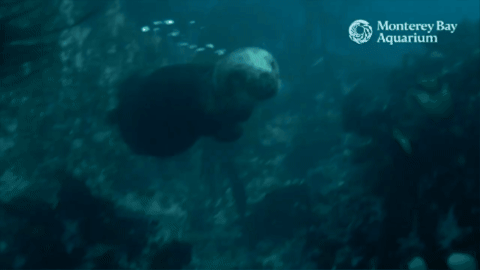

Teri Nicholson, senior research biologist at Monterey Bay Aquarium, has an otterly important job studying sea otters along the California coast. Southern sea otters are the glue that holds important coastal environments, like kelp forests, together, healthy, and in balance.
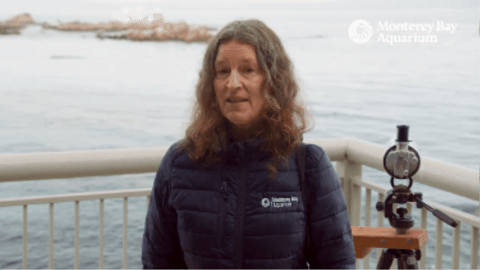
A recently published study led by Aquarium researchers amplifies the significant role these mighty mustelids play within kelp forest habitats. By eating the grazers (like abalone and urchins) that eat kelp, sea otters maintain that delicate balance…
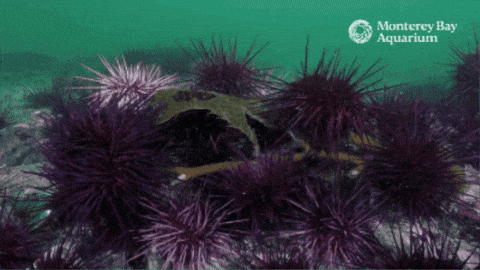


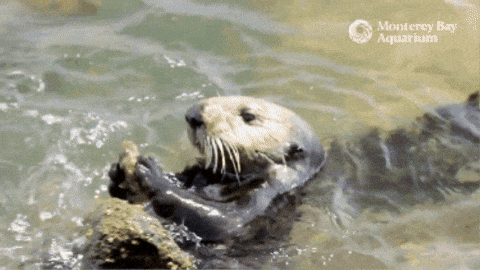
… helping kelp forests—and all those who depend on them—thrive!



youtube
Dive deeper into the impacts sea otters have on kelp forests in California in our web story!
#monterey bay aquarium#paws for this otterly important update#kelp plus otters equals healthy habitat#just add otter
1K notes
·
View notes
Text
In 2022, something happened in Britain for the first time in 6,000 years. Deep in the Kent countryside, a wild European bison calf was born as part of the Wilder Blean rewilding project. The last time wild European bison roamed Britain’s landscapes was after the last Ice Age, some 10,000 years ago, so it’s no wonder the calf’s arrival caused a stir. European bison were once a common sight across most of Europe. As the largest herbivore to roam the continent, European bison could be found from France all the way to the tip of the Black Sea in the Ukraine. The fossil record tells us that European bison have been roving the continent since the end of the Paleolithic Ice Age, with the earliest fossils dating back to 9,000 BC.
Now, bison are bouncing back. They have experienced a 166-fold increase in their population in the last 50 years. And these rates of return are not solely the reserve of the mighty bison. Other wild European mammals are also making a roaring comeback, and the speed of their resurgence suggests that wider, rapid natural regeneration is possible with multiple ecological, and therefore human benefits.
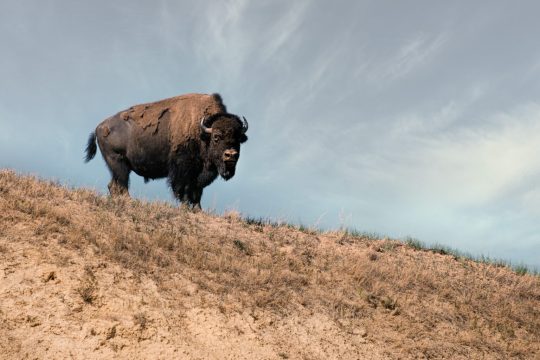
From 1960 to 2016, Eurasian beaver (Castor fiber) populations have ballooned 167-fold, from just a few thousand at the start of the 20th century to over 1.2 million wild beavers today. Grey seal populations have also grown by 6,273 percent and the population of Alpine ibex has risen by 417 percent. Eurasian badger populations have doubled, while Eurasian otter populations have tripled.
While these impressive rates of recovery are not reflected across all of Europe’s 250 wild mammal species, they do provide some evidence-based hope that wild mammals can once again flourish across Europe’s diverse and varied landscapes with the right support and policies in place.
The big picture
... Over the last 50 years the fate of some wild mammals across Europe has shifted. Some populations have experienced a rapid and dramatic increase over the last half century, reversing millenia of decline and offering fresh hope that nature can recover – if it’s given the chance.
Brown bear numbers have risen by an average of 44 percent between 1960 and 2016, while the Iberian lynx has seen its population grow by 252 percent. Humpback whales have seen their numbers rise by 37 percent between 1986 to 2016, while the pine marten – a natural predator to the invasive grey squirrel – has seen its population grow by 21 percent from 1986 to 2016. Some reptile species, such as the loggerhead turtle, have seen its numbers grow by 68 percent over the last 40 years.
The most impressive bounce backs, however, are among the beaver and bison – two species that play vital roles within ecosystems. Both beaver and bison populations have seen 167-fold increases over the last 50 years. These mammals help support a rich mosaic of habitats and biodiversity. Wild bison, for instance, trample and wallow in the soil and sand to create niche habitats for plants, insects and lizards, while also playing an important role in the dispersal of seeds.
Context and background
The impressive recovery rates over the past 50 years have been possible due to a shifting cultural and economic context. Alongside this, there is a growing scientific consensus of the importance of small and large mammals for sustaining biodiversity and helping ecosystems flourish. The sheer diversity of mammals, both in terms of their morphology and their roles within ecosystems, is testimony to the functions they perform. From the tiny bumblebee bat, which weighs just two grams, to behemoth blue whales, weighing in at 150,000 kilograms, mammals really do come in all shapes and sizes.

Wild mammals play a variety of leading roles within an ecosystem, from dispersing seeds, pollinating plants and regulating insect populations, to reducing disease transmission and creating niche habitats for other species. The European bison reintroduced to Kent in the UK have already started clearing paths through undergrowth, ripping the bark off trees, and wallowing around in the mud to make space for seeds and other habitats – natural processes that humans would struggle to replicate. Bison and other large herbivores are often labelled ‘ecosystem engineers’ for this very reason – they shape and manage the land they reside on.
Some species of mammals – such as the magical beaver – are considered keystone species due to their ability to shape the ecosystems around them, creating entirely new habitats through building dams where fish, birds and all manner of species can thrive. Other mammals, like bats, act as indicators of healthy and functioning ecosystems. Between 1974 and 2016, Geoffroy’s bat populations have increased 53-fold across Europe.
Wild mammals also have a role to play in reducing the damage and destruction wrought by climate breakdown. In the temperate climate of Europe, large mammals have been proven to reduce the risk of forest and wildfires by creating gaps in vegetation through grazing and trampling. In the summer of 2022, wildfires ravaged Europe, burning the second-largest area on record. As global temperatures continue to rise, wildfires will increase in their frequency and severity. Bolstering the population of large mammals could provide a useful tool in the fight against fires alongside deep and immediate cuts to emissions...
What’s more, the grazing of wild mammals can also help retain the carbon stability of soil over long periods of time. Soil contains vast amounts of carbon – more than all plants and the atmosphere combined – which makes ensuring its stability important for both climate efforts and environmental conservation. Mammals like the alpine ibex, which have seen their numbers grow by 417 percent from 1975 to 2016, are highly effective at stabilising soil carbon within grazing ecosystems.
-via Rapid Transition Alliance, March 29, 2023
#beaver#bison#mammal#ecosystem#ecology#endangered species#europe#united kingdom#kent#wildfires#rewilding#ecosystem restoration#good news#hope#hope posting
2K notes
·
View notes
Text
Dry Beast Monday: chinchillas
For over a year now I've been doing weekly Wet Beast Wednesday posts where I do a deep dive on some aquatic animal, and you know what? I'm tired of it! This is now a dry beast blog!* And where better to start than an animal that can literally die if it gets wet? Beasts can't get much dryer than that. So strap in for the first Dry Beast Monday... Dmonday?... Drunday? Whatever, it's the chinchilla.
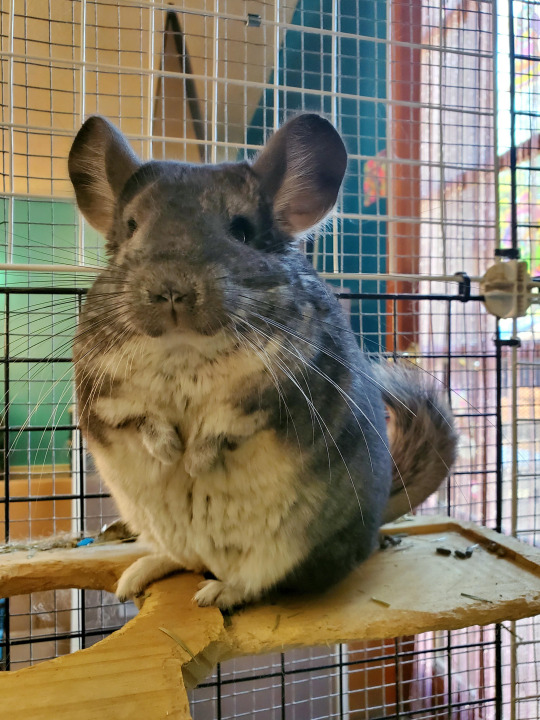
(Image: a pet chinchilla in a cage, standing upright on a wood platform that has been heavily chewed. It is a rotund mammal with a similar body plan to rabbits, featuring a large head distinct from a round body. Its hind paws are larger than the forepaws and have more distinct toes. Its eyes are almost completely black and it has a flat nose with very long whiskers. The ears are large, rounded, and mostly furless. The tail is bristly hair like a squirrel's and is curled up. Most of its fur is a dark grey but the fur on its underside is white. End ID)
Chinchillas are rodents (the best mammals, fight me) that are members of the family Chinchilladae along with the viscachas. There are two living species of chinchilla: the long-tailed chinchilla (Chinchilla lanigera) and the short-tailed chinchilla (Chinchilla chinchilla, formerly Chinchilla brevicaudata). The two species can produce sterile hybrid offspring. Domesticated chinchillas are descended from the long-tailed chinchilla. All chinchillas are medium-sized rodents with powerful back legs, long whiskers, large ears, and extremely dense fur. In comparison, the short-tailed chinchilla is larger and has a shorter tail, thicker and less distinct neck and shoulders, and smaller ears. The most famous feature of chinchillas is their fur. At about 20,000 hairs per square centimeter, chinchillas have the second densest fur of any mammal, second only to sea otters. Each hair follicle grows up to 50 hairs, compared to human follicles, which only grow 1. The fur is famous for being incredibly soft, often described as velvety. If you've never felt a chinchilla its really hard to describe just how soft they are. The fur is so dense because Chinchillas live in the highlands of the Andes mountains where it gets very cold. The fur is used for insulation and even with it being so thick, chinchillas still need to bask in the sun to warm themselves up. The fur is actually the reason why chinchillas can't get wet. Their fur is so dense that wanter can't evaporate easily, instead remaining around long enough for fungus to start growing in the fur. This can lead to a lot of different skin conditions and infections that can be lethal. When chinchillas bathe, they take dust baths. By rolling around in volcanic ash, the can work the ash into their fur, where it absorbs oils, moisture, and other contaminants. This keeps the fur clean and healthy. Domestic chinchillas need specially made dust for their baths. It cannot be substituted with sand or other materials. Chinchillas can release chunks of their fur in order to escape from predators, leaving the predator holding nothing but a tuft of hair while the chinchilla runs away. This is called fur drop and in domestic chinchillas it can be a sign of mishandling or stress. Wild chinchillas have grey fur, but domestic breeds have been bread to have other colors of fur, including white and black. Chinchillas can't sweat, which isn't a problem in their natural habitat, but is for domestic chinchillas. The only way for them to cool down is to expose their ears (which are hairless and heavily vascularized) to wind. Chinchillas in temperatures at or above 26 degrees C (80 F) are at risk of having heat strokes. Daytime in the Andes can exceed those temperatures, so chinchillas hide in burrows during the day. Chinchillas are very skilled at jumping, able to leap up to 1.8 meters (6 ft). Their hind legs are longer than the forelegs and provide propulsion when walking or jumping. The toes has fleshy pads called papillae that help them grip onto surfaces. Chinchillas live in arid, rocky conditions and are skilled at leaping between rocks. The tails act like rudders, providing stability and direction when leaping. The front feet are capable of gripping and picking up objects. Females tend to be larger than the males, but there is otherwise little visual difference between the sexes. Wild short-tailed chinchillas can reach 38 cm (including tail) and 800 grams while wild long-tailed chinchillas can reach 26 cm (including tail) and 450 grams. Domestic chinchillas can get up to twice the size of their wild relatives.

(Image: a wild long-tailed chinchilla sitting under a rock. Its body plan is the same as the pet chinchilla above, but its fur is a lighter grey End ID)

(Image: a short-tailed chinchilla in captivity. It has a less distinct neck than the long-tailed chinchilla, making it look like its head merges with the body. Its tail is shorter than that of the long-tailed chinchilla, making up about 1/5th of its length as compared to the long-tailed chinchilla's 1/3rd. End ID)
Chinchillas are social animals that live in colonies called herds that can reach up to 100 members. Females dominate the herds and can be aggressive toward each other, though physical fights are rare. The herd cooperates when finding food, always having at least one member acting as a lookout to spot predators while the rest feed. They communicate vocally, with 10 types of vocalizations on record for. Social behaviors include grooming, playing, and friendly nibbling of each other's ears. Pet chinchillas should never be kept alone. They should be in same-sex groups of at least 2. Chinchillas are crepuscular, active mostly at dawn and dusk. During the day and night, they are usually found hiding in burrows or crevices between rocks, where they can avoid predators and high or low temperatures. They are primarily herbivores, but will supplement their diets with insects and other bugs. Most of their diet consists of grasses, seeds, and succulents and cacti. Wild ones almost never drink water, instead getting all of their hydration from their food. Chinchilla digestive systems are fairly specialized to their food. Domestic chinchillas need special-formulated food and can only have wooden chew toys form certain species of wood. Fresh or dried fruit is good for a treat, but should not be a regular part of their diet as they have a lot of sugar. As with all rodents, the incisors grow continuously through the animal's entire life and need to be worn down by chewing on things.
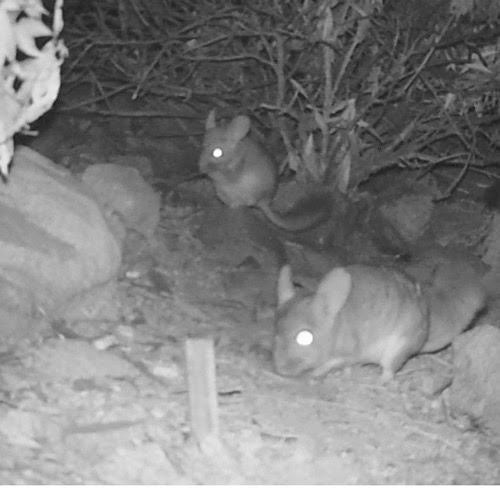
It is surprisingly hard to find good-quality images of wild chinchillas. Most of the time when you search for wild chinchilla pictures what you get are either domestic chinchillas or viscachas.
(Image: a trail-cam shot of two wild long-tailed chinchillas. The photo is i black-and-white. One is in the foreground on all fours while another is on its hind feet in the background, standing on a rock. The terrain is rocky and the chinchillas are next to a shrub. The camera's light makes their eyes appear to glow white. End ID)
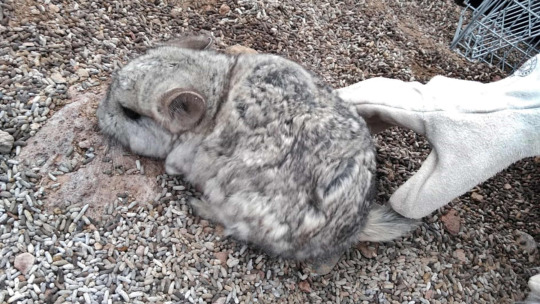
(Image: a wild short-tailed chinchilla that is part of a relocation effort. Its fur is light grey with darker patches. A gloved human hand is reaching in from the right side of the image. End ID)
Male chinchillas appear to be fertile year-round, but females only enter estrus during the winter, from May to November in their natural habitat. Gestation takes around 120 days in both species and both species typically have two litters a year (a low rate for a small mammal). Offspring (called kits) are born well-developed, with fur and open eyes, and can run as soon as they are born. They nurse for 6-8 weeks before being weaned. 1-6 kits are born at a time, with 2 being the usual number. Chinchillas are monogamous, mating for life. Either partner can initiate mating, which they do so with hair-pulling. Unusually for rodents, male chinchillas do provide care for their offspring. Members of the same herd will help each other with parenting. Female chinchillas have been known to adopt the kits of other females who can't nurse due to health issues. Females are usually dominant due to their size. Chinchillas become sexually mature at around 8 months. In the wild they can live for 10 years, which is doubled in captivity.
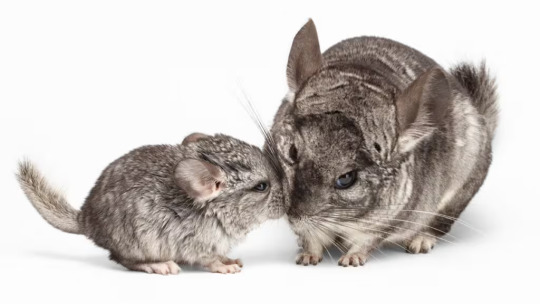
(Image: an adult domestic chinchilla with a juvenile. The juvenile is smaller than the adult, with proportionally larger head and limbs and proportionally smaller tail. The two of them are nuzzling their snouts together. End ID)
The name chinchilla comes from the Chincha people of the Andes, who hunted chinchillas for their fur and meat. This hunting increased vastly after European colonization of South America. Between hunting and trapping, both species of chinchilla were brought to near extinction and vastly reduced their native range. Both species are now only found in Chile and have been granted legal protection. The IUCN switched their classifications between Vulnerable, Endangered, and Critically Endangered for a while. As of 2016, both species are classified as Endangered, upgraded from Critically Endangered as their populations have seen some improvement. Poaching, both for fur and capture for sale as pets, is still a large threat to wild chinchillas. Their close cousins, the viscachas, are doing much better as they were not hit as hard by the fur trade. The domestication of the long-tailed chinchilla is thanks to Mathias F. Chapman, an engineer who became fascinated with the animals after meeting a native person who was trying to sell one. He ended up getting permission from the government of Chile to capture several and import them to the USA. It took him 3 years to catch enough that he considered suitable for breeding, 11 in total. He then spend over a year gradually bringing them down from the highlands to sea level, giving them plenty of time to acclimate to the lower altitude. Once in the USA, Chapman started breeding his chinchillas in a farm in California, though he had to deal with medical problems and a thief stealing half of his stock. Eventually, though, his experiment paid off. The vast majority of all domesticated chinchillas today are descended from those original 11, brought to the states in 1923. Chinchillas today are raised in captivity for their fur, for use as laboratory animals, and as pets. While both species are raised in captivity for fur, the domesticated chinchilla is descended from the long-tailed chinchilla and short-tailed chinchillas apparently do not make as good pets.
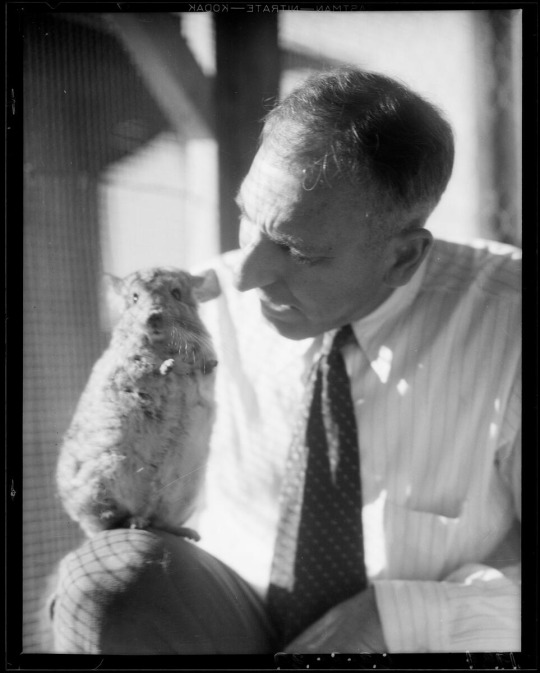
(Image: a black-and-white photo of Mathias F. Chapman, a white man with a large nose wearing a shirt and tie. A chinchilla is standing on his leg and looking at the camera while he looks at the chinchilla. End ID)
* April Fools
#april fool's day#the animal facts are real#dry beasts#dry beast monday#wet beast wednesday#chinchilla#long tailed chinchilla#short tailed chinchilla#domesticated chinchilla#rodent#mammal#biology#ecology#zoology#animal facts#informative#fur trade
95 notes
·
View notes
Text
Animal of the Day!
American Lobster (Homarus americanus)
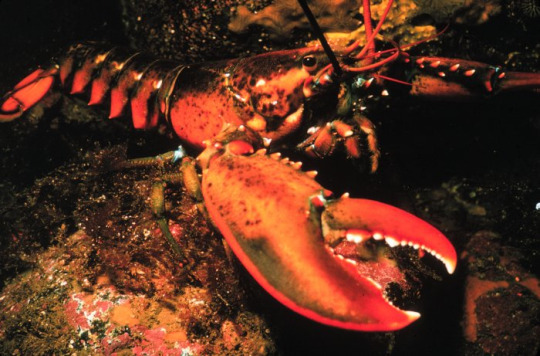
(Photo in Public Domain)
Conservation Status- Least Concern
Habitat- Northwest Atlantic Ocean
Size (Weight/Length)- 60 cm
Diet- Sea urchins; Mollusks; Marine worms; Starfish; Crabs
Cool Facts- While you’re more likely to have an American lobster end up on your plate, not many people know how important they are in their ecosystems. They eat huge amounts of over populated sea urchins that destroy mass areas of kelp reefs. These reefs provide homes for hundreds of species of the fish and the American lobster acts as a guardian alongside sea otters and sheepshead. These lobsters can live up to 100 years old and can weigh more than a human baby. There are strict regulations on the harvesting of American lobsters, mostly regarding the protection of egg carrying females and the massive breeder males.
Rating- 12/10 (Keeping the ocean healthy, one snack at a time.)
#Animal of the day#Animals#Crustacean#Friday#May 19#American lobster#Lobster#biology#science#conservation#the more you know
147 notes
·
View notes
Text
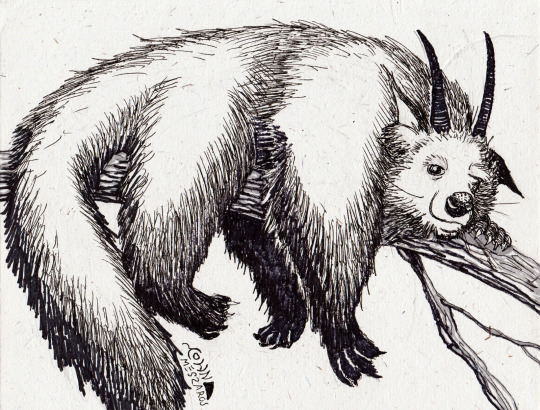
OZARK HOWLER- ARKANSAS
The Ozarks are a range of low mountains found primarily in Northern Arkansas and southern Missouri with portions extending into Oklahoma and Kansas. Their origins lie in the late Paleozoic when sand, silt, coral, and shells built up as layers of sludge on the bottom of a sea that covered what would eventually become the American South. Over time these sediments hardened into rock- sand became sandstone, silt became slate, and the shells and coral became limestone- and the movement of tectonic plates pushed them upwards into a low dome-like plateau. Over the next 485 million years rivers and rain gradually eroded the soft rocks into canyons, cliffs, and caves that have provided habitat for bears, bobcats, otters and other Southern wildlife along with more unusual creatures like blind cave fish, collared lizards and endangered grey bats. And perhaps a cryptid or two.
According to legend, the people of the Ozarks have been haunted for decades by the unearthly screams of a beast dubbed the Black Howler. Those who have caught a glimpse of the monster describe it as a dark-furred cat nearly the size of a bear. Other reports claim it has glowing red eyes and demonic horns sprouting from its head.
Explanations for the beast range from a normal, though unknown, species of large cat to something more supernatural. A few people have even compared the beast to English and Welsh legends of black dogs, cŵn annwn, hellhounds, and other supernatural beasts that bring misfortune to those who see them.
More skeptical people have speculated that the Howler is simply a misidentified cougar. Though these big cats are believed to be extinct in this region, it’s possible that a small population has survived. Or perhaps a few lone individuals have wandered in from other areas. This theory is bolstered by photos from trail cams showing creatures that strongly resemble these animals, and by similar cases of “phantom big cats” occurring in areas of the US where they are not normally found.
Though some claim that legends of the Howler go back generations, cryptozoologist Loren Coleman has found that the first reports of the beast originated from posts on online forums in the late 1990s. His investigations indicate that the “folklore” about the beast was a deliberate hoax to mock the widespread reports of chupacabras and bigfoots that were becoming increasingly widespread at the time thanks to the advent of the internet. Hoax it may be, but the Howler has since become a popular piece of Ozark folklore and sightings are still regularly reported.
The Howler is especially significant as one of the first urban legend monsters to be created online, laying the groundwork for later, more famous internet creatures like Slenderman, The Rake, Momo, and Trevor Henderson’s Siren Head.
RESOURCES
63 notes
·
View notes
Note
So, have any of you ever had a heatstroke? For example, the captain overheats and ends up in a heatstroke when you all are in the desert/heat. I'm only asking this because (especially Barnacles) you all can't really be in the desert. Also, HOW THE HECK DOES INKLING NOT FREAKING DIE WHEN HE'S OVER WATER?! HE'S A SQUID!!
Inkling is an Octopus, actually.
I'm finally answering one of these. Wow okay. Haha. My heart rate is skyrocketing
Heatstroke. Yes. That happened once. Not to me, but, to Barnacles. His suits cooler broke while we were trying to transport fish from a drying-up lake back into a suitable habitat.
However, he was okay. Peso put an ice pack over his head and rested him under a tree and we practically washed him in cold water that we collected from pails from a not-so nearby river, fanning him as well. Thanks to Pesos quick and experienced thinking we were able to cool him down and he suffered nothing fatal. Even though he wanted to keep working, we told him to rest, and Tweak got him with the gup H. She and Peso left. It reminded me that we are very much anthro, and things like this can happen. And yet, I still tend to overwork myself.. oof..
I do not know why you are asking us why inkling can survive on land. It's been like this for a while, little less than a hundred million years ago or so... Just like how we evolved to walk on two legs, the dumbo octopus developed, they've evolved, to have lungs.. and they can breathe on land now. Although, inkling must remain moist, or he will have difficulties breathing. We make sure he is always moist and comfortable.
Sincerely,
Dr. Shellington Sea otter
23 notes
·
View notes
Link
7 notes
·
View notes
Note
Living for the Subnautica love here ☺️ it’s a great template for so many AUs
Love Sea Emperor Stone as a concept too!! And Robotnik having to deal with all the planet throws at him, though you know he would love the technology, the fabricators and habitat builders, even if he does make them better xD
Our AU followed a similar path, Robotnik dumped on 4546B instead of the Mushroom Planet and following the Subnautica quest line but Stone was actually a new creature you don’t see in Subnaut - giant Otter Leviathan. He’s the only one of his kind and he actually saves Robotnik from a Reaper by chomping on it
He becomes basically a big furry companion for Robotnik to navigate the dangerous waters, as well as their bond because they’re the only intelligent creatures on the planet. He’s also not infected with or affected by Kharaa and that is because Stone was actually a person who crash-landed on the planet ages ago and was turned into a giant otter Leviathan creature by the Architects. He’s oooold, but still spry. And technically originated on the “Below Zero” side hence the fluffy nature
omg i looove this!! love the idea of stone being turned into a leviathan by the architects ages ago. and furry for the arctic region! (I really loved below zero too, they're both amazing games) I adore your otter leviathan stone sooo much he's soooo cute <3 i imagine the big otter cuddles got to be really snuggly 😊 Stone's gotta keep his doctor warm in sub zero temps when he runs out of fevered peppers!
thats so funny cause thats exactly how my stone and robotnik meet too, he's getting chased by a reaper and stone saves him.
i have a little bit I wrote for my au, I'd like to share with you if you're interested !
12 notes
·
View notes
Text
Did you know...
Summary: It’s amazing what kind of opportunities you receive with a little bit of well-placed knowledge.
Pairing: Jan Maas x Reader
Warnings: Jan being a nerd (love it), Jan being perfect, fluffy as fuck
Fandom: Ted Lasso

"Did you know sea otters eat about a quarter of their body weight every day?" A voice asked, pulling you from your thoughts; you'd gotten lost, almost in a trance, watching the otters swim and play together in their habitat. You let out a quiet laugh and grinned at the man. "I did, actually. Did you know they have the thickest fur of any animal and, unlike most marine mammals-" You started, only for him to finish your sentence "they lack that insulating layer of blubber." "Some otters will find a good rock and keep it with them their entire lives," you said with a smile. "And they store the rocks in the pockets under their arms, along with food sometimes." "Did you know 90% of sea otters live near Alaska?" You questioned back. The blonde man smiled and joked, "that's a shame. Americans can not even take care of themselves and most of the otters are in their waters?" You couldn't help but let out a loud laugh at the jab. "Nobody ever said life was fair," you said with a chuckle. "If it were fair, I would have met you a long time ago," he flirted smoothly.
Your cheeks immediately started heating up. "My name's Jan," he introduced, holding his hand out with a grin. "It's nice to meet you, Jan." You said after introducing yourself and shaking hands. "How do you know so much about otters?" He asked curiously. "I work here." You said happily before continuing, "you actually caught me watching the make sure one of them was healing okay. We brought her in after a boating accident to make sure she healed properly." "Oh? Which one is she?" He asks curiously. "She's right over there," you said, pointing to the otter floating on her back in the sunny part of the water, several mostly healed lacerations on her body. "So are you a vet?" He asks. "I am," You nod.
He was silent for a moment before speaking again. "Maybe you'll let me take you out sometime, Doctor?" He asked hopefully. "Well, I'd never say no to a cafe date." You said with a hum. "When do you get off work, then?" He asked. "5. There's a good place a couple of blocks down the street if you want to meet there." You suggested. "Then I will meet you there." He readily agreed.
Neither of you knew what would happen after that date. A little over a year later, you and Jan were back at the aquarium for your wedding. You were married in the very area you met; in front of the otter habitat. The sound of your coworkers and his teammates clapping and cheering when you were introduced as husband and wife was almost deafening compared to the usual hushed tones people used inside. After the ceremony, everyone headed out to where the reception would be. Of course, when you went to feed each other a piece of your wedding cake, you both thought it would be funny to smash it in each other's faces. You laughed before kissing each other. The rest of the wedding went better than you ever could have dreamed.
At the end of the night, after saying your goodbyes and thanking people for coming, you and Jan left the airport. Two hours later, you were getting settled in your hotel room in Amsterdam for your honeymoon. While Jan was in the bathroom getting ready for bed, you were getting comfortable in bed and lost in your own thoughts. "Hey, Jan?" You called cautiously. "Yeah?" He responded, stepping out of the bathroom with the toothbrush still in his mouth. "Did you know I'm pregnant?" You asked sheepishly. His eyes grew wide, and he just dropped the toothbrush, only staring in surprise. "Jan?" You asked when he had yet to say anything. "When did you find out?" He asked, excitedly jumping into bed next to you with a big grin on his face. "A couple of days ago. I wanted to surprise you, but I wasn't sure how. So... surprise!" You said, unable to hold back your laughter when he excitedly started peppering kisses all over your face.
Tag Team: @bdffkierenwalker @anarchistbeauty @nottodaynib
142 notes
·
View notes
Text
Hmmmmmm..... I may have been hasty confirming common pillbug. Not in the way that I'm not an isopod. I definitely am. But I may be a sea slater actually?
What has me thinking pillbug is that there is a very specific coloration I see myself in. The specificness made me confirm it, I was thinking, I must be this if I was so quickly and easily drawn to this coloration.
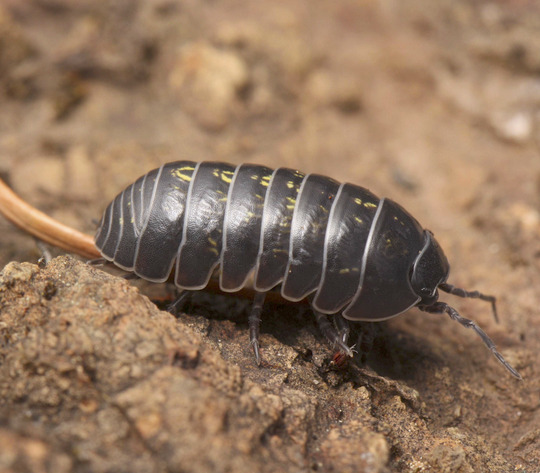
(This is that coloration.)
But so many more things fit with sea slaters. Just by looking at the most common species, Ligia oceanica, the diet fits better, the habitat fits better, and the body plan fits better. It is still a terrestrial woodlouse but is able to swim. Which matches my instincts, though I am still also an otter and a mosasaur, which could be muddying the waters? No pun intended.
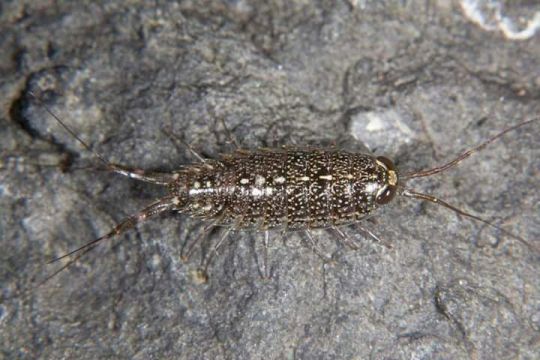
(This pattern kind of appeals to me honestly? This is Ligia exotica.)
I looked at sea slaters at first too but dismissed it, I guess because I've never personally seen them and been able to study the way they move and behave. Pillbugs are everywhere here and one of the few bugs I was comfortable with way back when I used to be entomophobic so I had more of a personal connection with them.
14 notes
·
View notes
Text
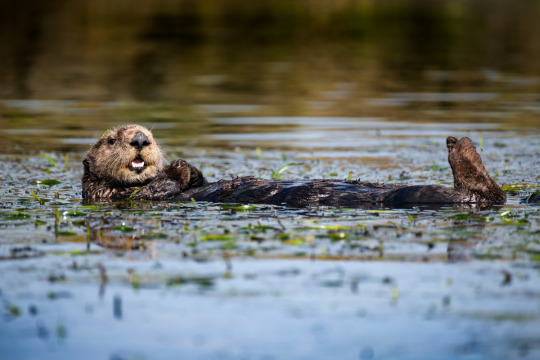
Let’s have a round of appaws for sea otters—our favorite fuzzy ecosystem engineers—on this World Wetlands Day! A recent study took a look at our landmark sea otter rehabilitation program and how it has supported the recovery of southern sea otter populations and the ecosystems they inhabit.

The reintroduction of rehabilitated otters into Elkhorn Slough resulted in the rapid resurgence of eelgrass meadows, a really important habitat for juvenile fishes, which also provides significant benefits in the fight against climate change. What an otterly pawsitive influence!
Want to learn more about the study? Check it out here: https://mbayaq.co/3HU05l9
#monterey bay aquarium#world wetlands day#pup pup hooray!#a slough of cuteness#searious conservocean goals
1K notes
·
View notes